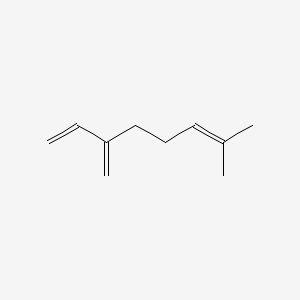| Authors | Title | Published | Journal | PubMed Link |
|---|---|---|---|---|
| Shah G et al. | Scientific basis for the therapeutic use of Cymbopogon citratus, stapf (Lemon grass). | 2011 | J Adv Pharm Technol Res | pmid:22171285 |
| Salleh WM et al. | Chemical compositions, antioxidant and antimicrobial activities of essential oils of Piper caninum Blume. | 2011 | Int J Mol Sci | pmid:22174627 |
| He P et al. | Distinct expression profiles and different functions of odorant binding proteins in Nilaparvata lugens Stål. | 2011 | PLoS ONE | pmid:22174925 |
| Abbasipour H et al. | Fumigant toxicity and oviposition deterrency of the essential oil from cardamom, Elettaria cardamomum, against three stored–product insects. | 2011 | J. Insect Sci. | pmid:22242564 |
| Suhail MM et al. | Boswellia sacra essential oil induces tumor cell-specific apoptosis and suppresses tumor aggressiveness in cultured human breast cancer cells. | 2011 | BMC Complement Altern Med | pmid:22171782 |
| Zhao T et al. | Induced terpene accumulation in Norway spruce inhibits bark beetle colonization in a dose-dependent manner. | 2011 | PLoS ONE | pmid:22028932 |
| Ji W et al. | Simultaneous determination of eight active components in Houttuynia cordata injection and its quality control in productive process. | 2011 | J Sep Sci | pmid:21972174 |
| Vallianou I et al. | Camphene, a plant-derived monoterpene, reduces plasma cholesterol and triglycerides in hyperlipidemic rats independently of HMG-CoA reductase activity. | 2011 | PLoS ONE | pmid:22073134 |
| Payo DA et al. | Variability of non-polar secondary metabolites in the red alga Portieria. | 2011 | Mar Drugs | pmid:22163195 |
| Bernardes WA et al. | Antibacterial activity of the essential oil from Rosmarinus officinalis and its major components against oral pathogens. | 2010 Sep-Oct | Z. Naturforsch., C, J. Biosci. | pmid:21138060 |
Myrcene
Myrcene is a lipid of Prenol Lipids (PR) class. Myrcene is associated with abnormalities such as Hypomenorrhea, abnormal fragmented structure, Nephrosis, Renal tubular disorder and Kidney Diseases. The involved functions are known as Anabolism, Gene Expression, Protein Biosynthesis, Mutation and Selection, Genetic. Myrcene often locates in Plastids, Proboscis, Body tissue, Clone and soluble. The associated genes with Myrcene are TTPA gene, monoterpene synthase, Genome, 4S-limonene synthase and Homologous Gene. The related lipids are Pinene, Octanols, Membrane Lipids and Fatty Acids, Unsaturated.
Cross Reference
Introduction
To understand associated biological information of Myrcene, we collected biological information of abnormalities, associated pathways, cellular/molecular locations, biological functions, related genes/proteins, lipids and common seen animal/experimental models with organized paragraphs from literatures.
What diseases are associated with Myrcene?
Myrcene is suspected in Nephrosis, Kidney Diseases, Dehydration, Hypomenorrhea, Renal tubular disorder and other diseases in descending order of the highest number of associated sentences.
Related references are mostly published in these journals:
| Disease | Cross reference | Weighted score | Related literature |
|---|
No disease MeSH terms mapped to the current reference collection.
PubChem Associated disorders and diseases
What pathways are associated with Myrcene
There are no associated biomedical information in the current reference collection.
PubChem Biomolecular Interactions and Pathways
Link to PubChem Biomolecular Interactions and PathwaysWhat cellular locations are associated with Myrcene?
Visualization in cellular structure
Associated locations are in red color. Not associated locations are in black.
Related references are published most in these journals:
| Location | Cross reference | Weighted score | Related literatures |
|---|
What functions are associated with Myrcene?
Related references are published most in these journals:
| Function | Cross reference | Weighted score | Related literatures |
|---|
What lipids are associated with Myrcene?
Related references are published most in these journals:
| Lipid concept | Cross reference | Weighted score | Related literatures |
|---|
What genes are associated with Myrcene?
Related references are published most in these journals:
| Gene | Cross reference | Weighted score | Related literatures |
|---|
What common seen animal models are associated with Myrcene?
There are no associated biomedical information in the current reference collection.
